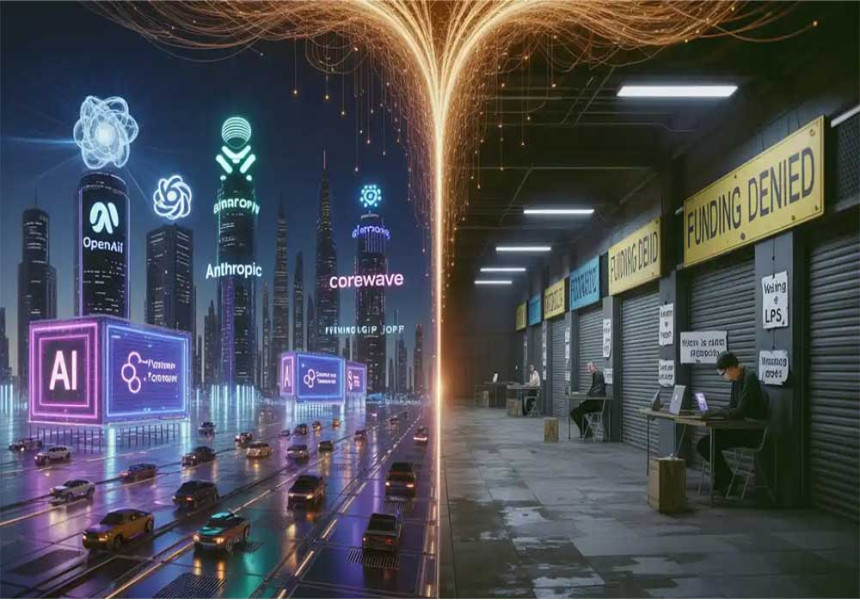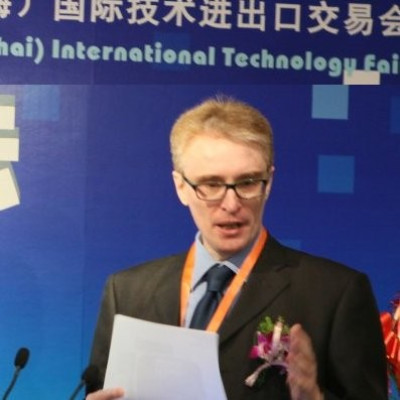The AI Investment Boom: A Double-Edged Sword for Venture Capital
The recent report from PitchBook reveals a paradox shaping the venture capital landscape in 2025: while AI startups are enjoying a historic funding surge, many venture capital (VC) funds are struggling to raise capital. This dynamic exposes deeper structural tensions — between concentrated bets on AI superstars and the broader health of the startup and investment ecosystem.
A Surge That Masks the Strain
U.S. startups collectively raised $162.8 billion in H1 2025, up 75.6% from the same period last year. It's the second-highest first-half total ever recorded. On the surface, this may seem like a revival of venture capital optimism — but the underlying reality is more complex.
The vast majority of this capital is flowing to a narrow band of AI startups, with just five companies accounting for over a third of all Q2 funding. Firms like OpenAI, Anthropic, CoreWeave, and Groq are attracting mega-rounds exceeding $10 billion, a scale rarely seen in traditional VC. These resemble infrastructure-level investments more than classic early-stage venture bets.
According to PitchBook, a staggering 64% of U.S. VC dollars now go to AI-related companies — an unprecedented concentration.
Meanwhile, VC fund managers themselves are facing increasing headwinds. U.S. VCs raised just $26.6 billion across 238 funds in H1 — a 34% drop year-over-year. Median fund closing times have stretched to 15.3 months, reflecting hesitancy among LPs (limited partners) to commit fresh capital amid concerns about exit activity and illiquidity.
This divergence — robust deployment vs. weak fundraising — highlights a structural tension: capital is flowing into AI not through a thriving VC ecosystem, but via increasingly centralized bets. It’s a boom — but not a broad one.
The Rise of "AI Project Finance"
We are witnessing a kind of financial Darwinism within the tech ecosystem. Investors, flush with dry powder but risk-averse, are concentrating their bets on perceived “sure wins” in AI. These are no longer startup-scale plays. They are infrastructure plays — building the core compute, cloud, and model layers of the next digital economy.
This resembles project finance more than venture capital — focused on fewer, larger, later-stage investments. The result? Less capital for early-stage startups, non-AI ventures, and the long tail of innovation.
This concentration may generate short-term gains, but it carries systemic risks: valuation inflation, monocultures of innovation, and the potential crowding-out of sectors that matter deeply — like climate tech, healthtech, or advanced manufacturing.
Exit Momentum: A Glimmer of Hope
There are signs of life on the exit front. AI-adjacent firms such as CoreWeave and Hinge Health are preparing for IPOs, and M&A activity is showing cautious recovery. If these exits materialize with healthy returns, they could unlock new LP interest and reinvigorate VC fundraising.
But the reality is still fragile: many 2020–2021 vintage funds remain underwater, and LPs are increasingly selective. Without more broad-based liquidity events, the VC fundraising slowdown may persist, even as select portfolio companies rake in massive rounds.
What This Means for the Future of Innovation
If the current AI-funding concentration continues, the venture model itself may need rethinking. We could see the rise of dual-track investing: mega-funds acting as infrastructure financiers for frontier AI, while smaller, mission-driven funds back underserved verticals.
Alternatively, new hybrid models — such as iTV-integrated platforms, AI-enabled crowdfunding, or tokenized venture vehicles — may emerge to fill the gaps, redistributing capital more equitably across ecosystems and geographies.
For now, here are three takeaways from this inflection point:
- AI is dominating the capital narrative — but not necessarily the innovation landscape. Many important sectors are being overlooked.
- LP hesitancy reflects deep market scars from 2021’s excesses and 2022’s pullback. Trust and performance must be rebuilt.
The next great VC differentiator may not be access to AI founders — but the ability to navigate cycles, build trust with LPs, and support innovation outside the spotlight.
Final Thought
We must not mistake capital concentration for ecosystem health. The AI boom is real, powerful, and transformative — but if it continues to vacuum up all available resources, it risks stifling the pluralism that made tech such a fertile space for two decades.
A more inclusive, resilient, and diversified venture environment remains essential — not just for investors, but for the societies and challenges these technologies ultimately aim to serve.









